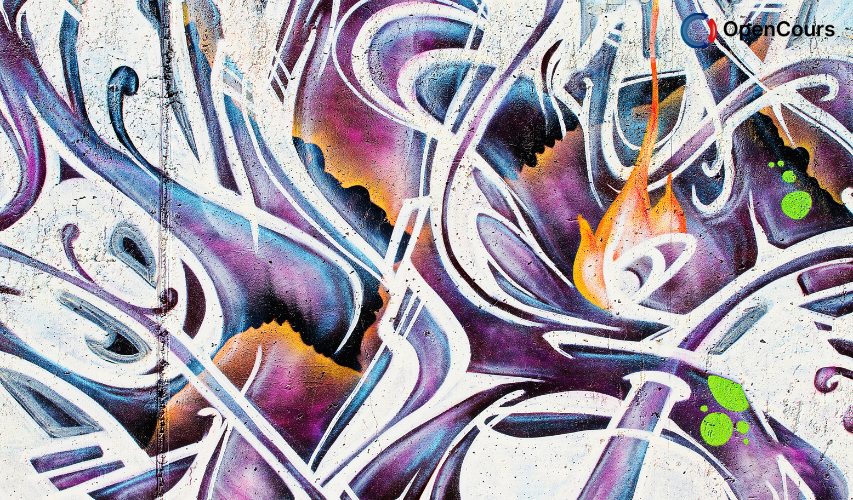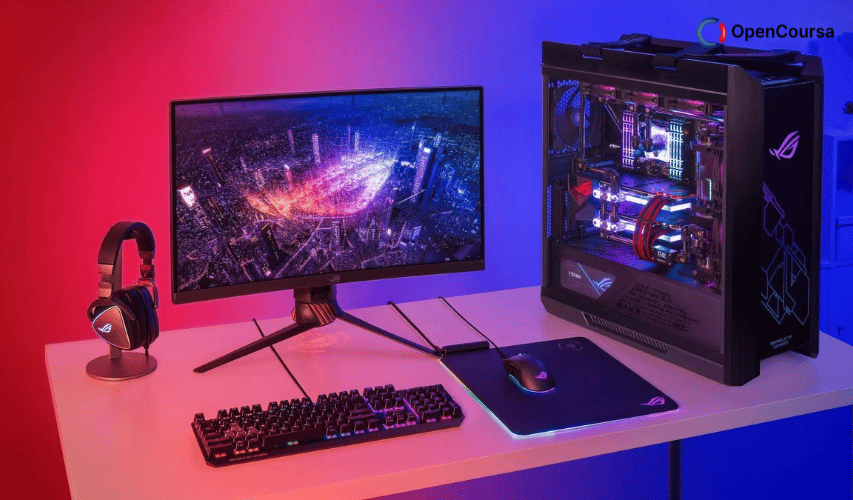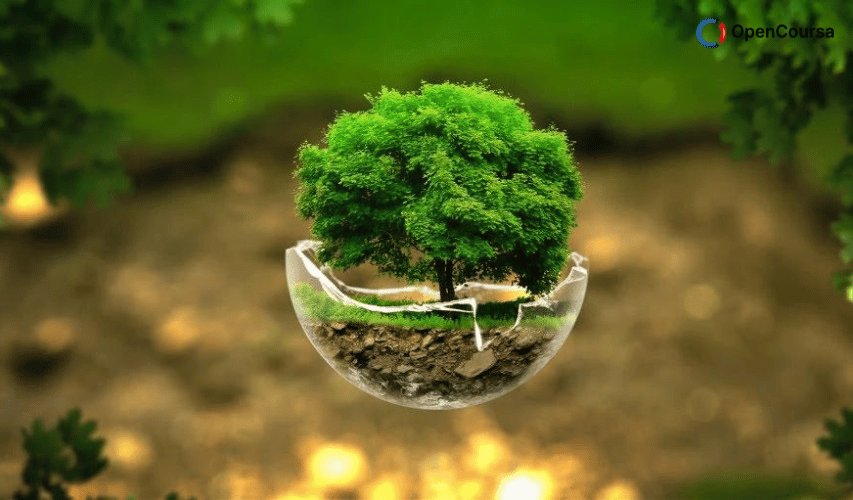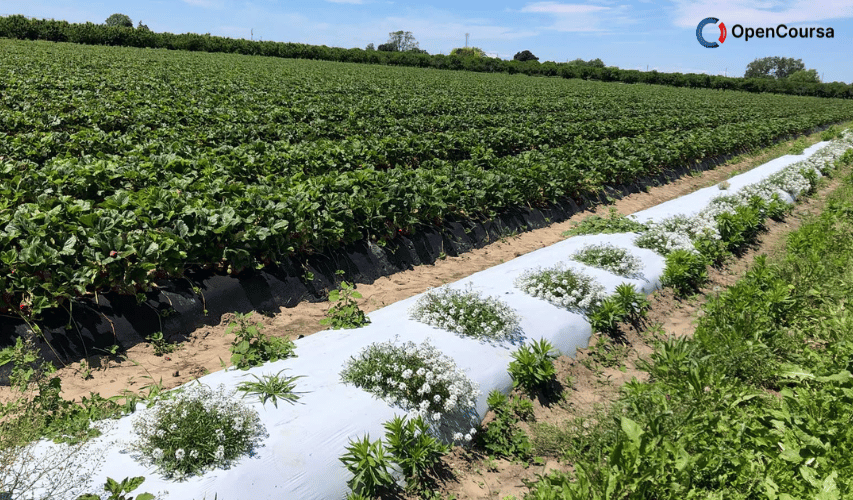Home » Course Layouts » Free Course Layout Udemy
This course provides an introduction to nuclear science and its engineering applications. It describes basic nuclear models, radioactivity, nuclear reactions, and kinematics; covers the interaction of ionizing radiation with matter, with an emphasis on radiation detection, radiation shielding, and radiation effects on human health; and presents energy systems based on fission and fusion nuclear reactions, as well as industrial and medical applications of nuclear science.
0
24
English
English [CC]
- Learn basic syntax that can apply to any language.
- Learn what is a programming language and the basic concepts for beginners.
- Understand what is Javascript in it's truest form.
- Know the basic syntax of Javascript.
- Know some hidden quirks in Javascript.
Description
What Is the Course All About?
Introduction to Nuclear Engineering and Ionizing Radiation and what he hopes students will take away from the class.The lack of knowledge means there's something new to explore. But if you don't have anything to conclude, don't draw a conclusion!
— MICHAEL SHORT

A packet of crushed red pepper that has been irradiated to prevent spoilage. (Image courtesy of Lee Bennett on Flickr. License: CC BY-NC-SA.)
Opening Knowledge Gaps in Nuclear Science
In this section, Professor Short explains his sense of the educator's role in helping students to attain fluency in a subject. What does it mean to you for students to develop fluency in this field? PROFESSOR SHORT: A cursory knowledge of radiation science is not enough. There are a lot of self-proclaimed experts who have learned a bit of genuine knowledge but then extrapolate it too far. And there are celebrities and other role models spouting falsehoods about radiation, or vaccines, or other things that they don't understand. It's important to be fluent and well-grounded in the fundamentals so that you can sort out fact from fiction. I want every student that leaves my class to be able to tell whether a claim is plausible or not and to verify if the source is genuine. How do you help students develop this fluency? PROFESSOR SHORT: It starts off with the fundamentals of radiation science. As in any class, we teach all the fundamentals from well-established theory, but along the way, every week, we have labs and personalization. For example, on the first day of class, I ask students to bring in their toenail clippings. And they usually say, “That's disgusting! What are we doing?” And I say to them, “You'll see.” We put their toenail clippings in the reactor and we irradiate them. And because, to some degree, you are what you eat, some of the elements that we eat get incorporated into our toenails. So we activate those toenails by putting them in the reactor.Not too many people learn well by being lectured at, but everyone learns well by opening knowledge gaps.
— MICHAEL SHORT
In this section, Professor Short gives examples of ways he incorporates experiential learning into his teaching approach. What opportunities do students in the class have to engage at an experiential level? PROFESSOR SHORT: When we learn about reactor power manipulation, we let the students manipulate the power of our research reactor. We have a six-megawatt reactor, and we let the students take the control rod controls. They're able to push the rods in to lower the power and raise them up to raise the power, and they'll notice that, as they're inserting the rod, the power goes down. And then they stop moving the rod and the power keeps going down. So then they have to lift it up again, and it shows these strange and nonlinear methods of reactor control. But the student's also usually sweating and shaking because they’re controlling a six-megawatt reactor.

Granite structures, such as the façade of Boston’s South Station, can give off significant levels of radon gas. (Image courtesy of Bogdan Tapu on Flickr. License CC BY-NC.)
Everything is reducible to practice. Everything can be real if you put in the effort.
— MICHAEL SHORT
In this section, Professor Short weighs in on the importance of valuing teaching and being responsive to students’ concerns. What else would you like to add about teaching this course?
I don't think any educator should be too busy to put as much time into their teaching as their research.
— MICHAEL SHORT
Analytical and Laboratory Homework Assignments: Building Skills, Testing Intuition, Confirming Theory
This year, we are including a number of types of problems in each 22.01 problem set. Approximately half of each problem set will consist of simpler questions, designed to build critical mathematical, scientific, and intuitive skills to solve problems in radiation science. The other half will be alternating analytical questions of considerable difficulty, and take-home laboratory exercises where you will have to make and explain measurements related to radioactivity.Analytical Questions of Considerable Difficulty
These will consist of open-ended questions, where you have to make key assumptions, choose your problem-solving approach, and work out the intermediate steps yourself. The numerical answers will be given in the problem statement, to help you check the validity of your approach. Grades for these problems will be based on how you set up the problems, define assumptions, and your intermediate work.Take-Home Laboratory Questions
The laboratory component of each assignment should be submitted as a short scientific journal article. We'll provide a sample high-quality journal article, highlighting the type of organization, language, sections, and references that it should contain. Each article should contain:- A < 100-word abstract, which summarizes the main problem and results very briefly.
- An introduction, which puts the problem into context: Why it is important (and not because it was assigned).
- An experimental methods section, where you describe what you did.
- A results section, where you show all your raw and intermediate data.
- A discussion section, where you explain your results, and you mention/quantify any sources of error.
- A conclusion section, where you quickly summarize your major contributions.
Working Together, Academic Integrity
Working together is OK! If you work in a team, you must:- Acknowledge your team members prominently in the assignment, whether it is analytical or laboratory-based.
- Write your own laboratory articles from scratch.
- Write/typeset your own problem sets (no xeroxing).
- State who did which parts of the assignment. If we sense that someone is doing almost all the work, we will meet with you to prevent this sort of thing.
- It's OK to take one set of experimental data together as a team, as long as you say who took the data.
Textbooks
Required Textbook
[Turner] = Turner, James E. Atoms, Radiation, and Radiation Protection. 3rd ed. Wiley-VCH, 2007. ISBN: 9783527406067.
Turner, James E. Atoms, Radiation, and Radiation Protection. 3rd ed. Wiley-VCH, 2007. ISBN: 9783527406067.
Additional Book
[Yip] = Yip, Sidney. Nuclear Radiation Interactions. World Scientific Publishing Company, 2014. ISBN: 9789814368070.
Yip, Sidney. Nuclear Radiation Interactions. World Scientific Publishing Company, 2014. ISBN: 9789814368070.
| LEC # | TOPICS | READINGS | CHALKBOARDS |
|---|---|---|---|
| 1 | Radiation History to the Present—Understanding the Discovery of the Neutron | Chadwick, J.  "Possible Existence of a Neutron." (PDF) Nature 129 (1932): 312.
———. "The Existence of a Neutron." Proceedings of the Royal Society A: Mathematical, Physical and Engineering Sciences 136, no. 830 (1932): 692. "Possible Existence of a Neutron." (PDF) Nature 129 (1932): 312.
———. "The Existence of a Neutron." Proceedings of the Royal Society A: Mathematical, Physical and Engineering Sciences 136, no. 830 (1932): 692. |
|
| 2 | Radiation Utilizing Technology | [Yip] pp. 1–11. | |
| 3 | Nuclear Mass and Stability, Nuclear Reactions and Notation, Introduction to Cross Section | [Turner] Chapter 3: The Nucleus and Nuclear Radiation, pp. 55–61. A gentle introduction to nuclear mass and binding energy[Yip] Chapter 4: Stability of Nuclei, pp. 51–58. Considerably more detail and derivations | |
| 4 | Binding Energy, the Semi-Empirical Liquid Drop Nuclear Model, and Mass Parabolas | [Yip] Chapter 4: Stability of Nuclei, pp. 59–64. Short but useful; please read fully and carefully |  Click to see full size image
Click to see full size image |
| 5 | Mass Parabolas Continued, Stability, and Half-Life | Oganessian, Y. and K. Rykaczewski. "A Beachhead on the Island of Stability." Physics Today 68, no. 8 (2015): 32. A fascinating article from Physics Today about superheavy elements | |
| 6 | The Q-Equation—The Most General Nuclear Reaction | [No reading assigned] | 
 |
| 7 | Q-Equation Continued and Examples | [No reading assigned] | 
 |
| 8 | Radioactive Decay—Modes, Energetics, and Trends | [Turner] Sections 3.3 to 3.8, pp 62–79. |  |
| 9 | Radioactive Decay Continued | [Turner] Sections 4.1 to 4.3, pp. 83–88. | |
| 10 | Radioactive Decay Continued | Wotiz, R.  "Ionization Detectors." (PDF) Circuit Cellar 256 (2011): 60–65..
A simple explanation of the math & physics of ionization smoke detectors "Ionization Detectors." (PDF) Circuit Cellar 256 (2011): 60–65..
A simple explanation of the math & physics of ionization smoke detectors |
 |
| 11 | Radioactivity and Series Radioactive Decays | [Turner] Section 4.4, pp. 89–95. | 
 |
| 12 | Numerical Examples of Activity, Half-Life, and Series Decay | [Turner] Chapter 11, pp. 303–35. A complete derivation of statistics from Binomial to Poisson to Normal, as it applies to radiation counting uncertainty |  |
| 13 | Practical Radiation Counting Experiments—Solid Angle, Count Rates, Uncertainty, and Hands-On Gamma Counting and Nuclear Activation Analysis | [No reading assigned] | |
| 14 | Photon Interactions with Matter I—Interaction Methods and Gamma Spectral Identification | [Turner] Chapter 8, pp. 173–201. [Yip] pp. 216–22. |  |
| 15 | Photon Interaction with Matter II—More Details, Shielding Calculations | [No reading assigned] |  |
| 16 | Nuclear Reactor Construction and Operation | [No reading assigned] | |
| 17 | Ion-Nuclear Interactions I—Scattering and Stopping Power Derivation, Ion Range | [Turner] Chapter 6, pp. 139–54. | 
 |
| 18 | Ion-Nuclear Interactions II—Bremsstrahlung, X-Ray Spectra, Cross Sections | [Turner] Chapter 5, pp. 109–34. | 

 |
| 19 | Uses of Photon and Ion Nuclear Interactions—Characterization Techniques | [Turner] Chapter 9, pp. 209–28. A slightly simpler explanation[Yip] Chapter 12, pp. 241–57. A more difficult, more thorough explanation |  |
| 20 | How Nuclear Energy Works | [No reading assigned] |  |
| 21 | Neutron Transport | [Turner] Sections 9.9–9.11, pp. 228–35. A simpler explanation of some unique neutron reactions[Yip] Sections 9.2–9.3, pp. 184–220. Quite thorough, with more derivation of energetics | 
 |
| 22 | Simplifying Neutron Transport to Neutron Diffusion | [No reading assigned] | 
 |
| 23 | Solving the Neutron Diffusion Equation, and Criticality Relations | Excerpt from  Duderstadt, J. J., and L. J. Hamilton. Nuclear Reactor Analysis. Wiley, 1976, pp. 111–13 and 120–29. ISBN: 9780471223634.
Conceptual derivation of the neutron transport equation, balancing gains and losses[Turner] Chapter 3, pp. 45 and 57–61.
A simplification of the NTE to a one-variable ODE for a bare, homogeneous reactor Duderstadt, J. J., and L. J. Hamilton. Nuclear Reactor Analysis. Wiley, 1976, pp. 111–13 and 120–29. ISBN: 9780471223634.
Conceptual derivation of the neutron transport equation, balancing gains and losses[Turner] Chapter 3, pp. 45 and 57–61.
A simplification of the NTE to a one-variable ODE for a bare, homogeneous reactor |

 |
| 24 | Transients, Feedback, and Time-Dependent Neutronics | [Turner] Chapter 15, pp. 475–510. [Turner] Section 11.12, pp. 337–42. Deadtime, energy resolution, analyzability | 
 |
| 25 | Review of All Nuclear Interactions and Problem Set 7 Help | GenIV International Forum / OECD Nuclear Energy Agency.  "Technology Roadmap Update for Generation IV Nuclear Energy Systems." (PDF - 2.8MB) January 2014.
Skim for details about the advanced fission reactors being researched "Technology Roadmap Update for Generation IV Nuclear Energy Systems." (PDF - 2.8MB) January 2014.
Skim for details about the advanced fission reactors being researched |
 |
| 26 | Chernobyl—How It Happened | [No reading assigned] | |
| 27 | Nuclear Materials—Radiation Damage and Effects in Matter | [No reading assigned] | |
| 28 | Chernobyl Trip Report by Jake Hecla | [No reading assigned] | |
| 29 | Nuclear Materials Science Continued | [Turner] Chapter 12, pp. 361–86. | |
| 30 | Radiation Dose, Dosimetry, and Background Radiation | [Turner] Sections 4.5–4.6, pp. 96–102. Ackermann, M., et al. "Detection of the Characteristic Pion-Decay Signature in Supernova Remnants." Science 339, no. 6121 (2013): 807–11. A recent breakthrough paper, changing the theory of the origin of cosmic rays | |
| 31 | Frontiers in Nuclear Medicine, Where One Finds Ionizing Radiation (Background and Other Sources) | [No reading assigned] | |
| 32 | Chemical and Biological Effects of Radiation, Smelling Nuclear Bullshit | [Turner] Sections 13.1–13.8, pp 399–421. | |
| 33 | Long-Term Biological Effects of Radiation, Statistics, Radiation Risk | [Turner] Sections 13.9–13.15, pp. 421–41. Valentin, J., ed. "Low-dose Extrapolation of Radiation-related Cancer Risk." Annals of the International Commission of Radiological Protection 35, no. 4 (2005): 1–141. ICRP-99 Recommendations on Radiation Protection: Read pp. 13–46 for data and explanations about quantifying radiation risk Prekeges, J. L. "Radiation Hormesis, or, Could All That Radiation Be Good for Us?" Journal of Nuclear Medicine Technology 31, no. 1 (2003): 11–17. A quick survey of the history and current knowledge (as of 2003) of different models of radiation exposure Luckey, T. D. "Radiation Hormesis: The Good, The Bad, and The Ugly." Dose-Response 4, no. 3 (2006): 169–90. A rather pointed criticism of the LNT model | |
| 34 | Radiation Hormesis | Moeller, D. W. "Radiation in Perspective." HPS Newsletter, June 1998. p. 17.
A concise ten-point summary of typical radiation doses incurred by the general public Urbain, W. M. "General Effects of Ionizing Radiation on Foods" and "Wholesomeness of Irradiated Foods." Chapters 5 and 13 in Food Irradiation. Academic Press, 2012, pp. 118–23 and 269–75. ISBN: 9780124315853. [Preview with Google Books] Urbain, W. M. "General Effects of Ionizing Radiation on Foods" and "Wholesomeness of Irradiated Foods." Chapters 5 and 13 in Food Irradiation. Academic Press, 2012, pp. 118–23 and 269–75. ISBN: 9780124315853. [Preview with Google Books]
 "What's Wrong With Food Irradiation?" (PDF) Organic Consumers Association, 2001.
Using your new knowledge from 22.01, point out and explain all the scientific mistakes in this article. Include primary sources as the backup to your arguments.
Mercola, J. M. "Never Buy Meat, Potatoes or Herbs With 'Treated by Radiation' on the Label." 2011.
This article contains references to primary sources. Come to class with a list of which (if any) reasons for opposing food irradiation are incorrect, and explain why. "What's Wrong With Food Irradiation?" (PDF) Organic Consumers Association, 2001.
Using your new knowledge from 22.01, point out and explain all the scientific mistakes in this article. Include primary sources as the backup to your arguments.
Mercola, J. M. "Never Buy Meat, Potatoes or Herbs With 'Treated by Radiation' on the Label." 2011.
This article contains references to primary sources. Come to class with a list of which (if any) reasons for opposing food irradiation are incorrect, and explain why. |
|
| 35 | Food Irradiation and Its Safety | World Health Organization.  "High-Dose Irradiation: Wholesomeness of Food Irradiated With Doses Above 10kGy." (PDF - 4.2MB) Report of Joint FAO / IAEA / WHO Study Group. 1999. "High-Dose Irradiation: Wholesomeness of Food Irradiated With Doses Above 10kGy." (PDF - 4.2MB) Report of Joint FAO / IAEA / WHO Study Group. 1999. |
Course content
-
- Radiation History to the Present—Understanding the Discovery of the Neutron 01:00:00
-
- Radiation Utilizing Technology 01:10:00
- Nuclear Mass and Stability, Nuclear Reactions and Notation, Introduction to Cross Section 00:59:00
- Mass Parabolas Continued, Stability, and Half-Life 00:59:00
- Q-Equation Continued and Examples 00:59:00
- Radioactive Decay Continued 01:40:00
- Numerical Examples of Activity, Half-Life, and Series Decay 01:05:00
- Photon Interactions with Matter I—Interaction Methods and Gamma Spectral Identification 00:59:00
- Nuclear Reactor Construction and Operation 00:55:00
- Ion-Nuclear Interactions II—Bremsstrahlung, X-Ray Spectra, Cross Sections 00:55:00
- How Nuclear Energy Works 00:55:00
- Simplifying Neutron Transport to Neutron Diffusion 00:55:00
- Transients, Feedback, and Time-Dependent Neutronics 00:55:00
- Chernobyl—How It Happened 00:59:00
N.A
- 5 stars0
- 4 stars0
- 3 stars0
- 2 stars0
- 1 stars0
No Reviews found for this course.










